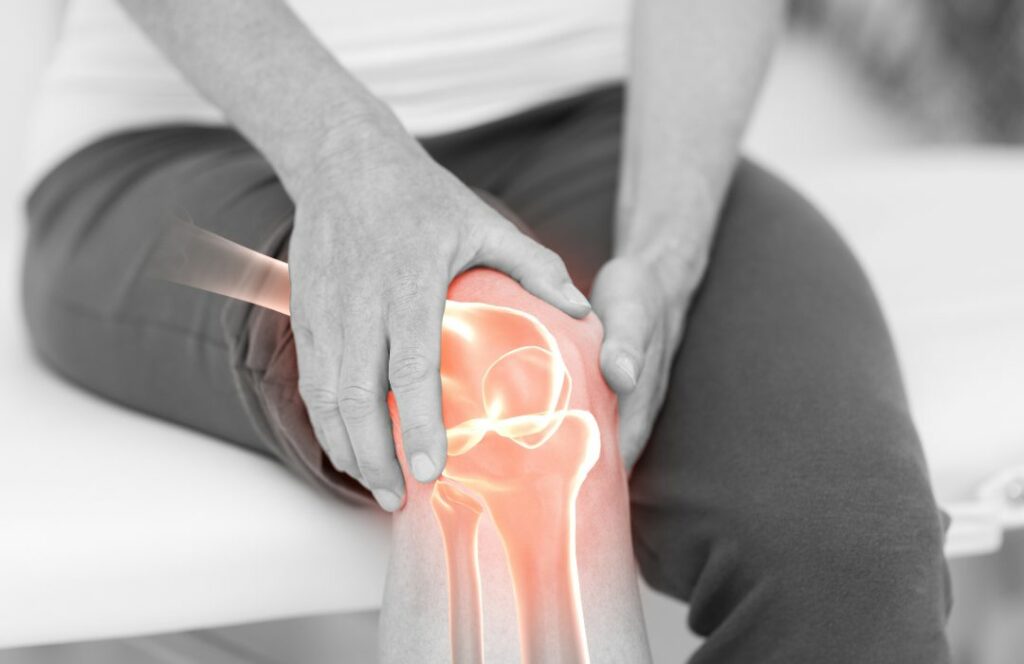If you have ever experienced pain in your knee, you may have wondered what was wrong. You may have even been told that you have plica syndrome. But what is plica syndrome, and how can it be treated? In this blog post, we will discuss everything you need to know about plica syndrome: what it is, how it is diagnosed, and the best treatment options available.
Contents
What Is Plica Syndrome?
A plica is an extra fold of tissue in a joint, most commonly found in the knee. It is also sometimes called a “patellar tendon” or “singular plica.” Plica syndrome happens when there is inflammation and swelling of the tissue.
This can be caused by overuse in athletes, such as runners or those playing basketball or football. It can also be caused by years of wear and tear on the knee joint.
However, there are other conditions that can cause the same symptoms as plica syndrome. It is important to have a doctor or physical therapist perform an exam to rule out these other conditions first.
How Do You Know If You Have Plica Syndrome?
 Plica syndrome is a condition that affects the knee joint and is associated with symptoms such as pain, swelling and restricted movement. One of the most common types of plica is prominent lateral femoral plica (PLFP), also known simply as plica syndrome. It’s important to know how to recognize it in order to provide the necessary treatment.
Plica syndrome is a condition that affects the knee joint and is associated with symptoms such as pain, swelling and restricted movement. One of the most common types of plica is prominent lateral femoral plica (PLFP), also known simply as plica syndrome. It’s important to know how to recognize it in order to provide the necessary treatment.
The most common sign of plica syndrome i.e. pain and swelling can also extend around to the sides of the knee and down into the thigh. It’s important to explore a variety of possible causes for these symptoms if you have them, such as arthritis, bursitis or tendonitis.
Another common symptom of plica syndrome is a popping sensation in your knee when you bend and flex it. Some people also experience feelings of weakness or instability in the knee joint. If you have these symptoms consistently, it’s important to consult a doctor for proper treatment options. A doctor may order an MRI or ultrasound to help confirm a diagnosis
How To Get Rid Of Plica Syndrome?

There is no cure for plica syndrome, but there are several treatment options available that can help to manage the pain and discomfort associated with it. Let us discuss them below:
Rest
The first step in treating plica syndrome is to rest the knee and avoid any activities that cause pain or discomfort. Depending on the severity of your symptoms, you may need to take a few days off from work and other duties until your knee heals.
Physical therapy
Working with a physical therapist can help you to strengthen the muscles surrounding your knee, which can reduce symptoms and prevent further injury. Your physical therapist may also use ultrasound therapy or electrical stimulation to help relieve pain and swelling.
Medications
Non-steroidal anti-inflammatory drugs (NSAIDs) such as ibuprofen can help to reduce inflammation and pain. If your symptoms are severe, your doctor may prescribe stronger pain medications or corticosteroid injections to help reduce inflammation.
Surgical Treatment
In some cases, plica syndrome may not respond to conservative treatments and you may require surgery to repair the torn tissue or remove it completely. This is a relatively minor procedure that can be done on an outpatient basis, and you can usually return to your normal activities within a few weeks.
If you are experiencing pain or discomfort in your knee, speak with your doctor right away about the best treatment options for it. With the right care and rest, you can manage the symptoms so that they do not interfere with your daily life.
Exercises To Relieve This Plica Syndrome
Some exercises you can do on your own to relieve yourself from the pain of plica syndrome. Let us discuss them below:
Swimming
A well-known exercise for treating plica syndrome is swimming, which can be done every day without putting a strain on your knee or hip. Swimming allows you to maintain an upright position with the legs straight, which helps reduce pressure and minimise pain. If the pool you are using has a deep end, you can alternate between the deep and shallow end to reduce your pain.
Cycling
Another effective exercise for plica syndrome is cycling. If you have access to a stationary bike, this is an excellent way to loosen up tight hip muscles and increase blood circulation. Choose a low resistance level and pedal slowly for about 20 minutes twice a day.
Strengthening quadriceps muscles
Strengthening your quadriceps muscles can also help to relieve the pain associated with plica syndrome. The most effective exercises for this include lunges, squats, and step-ups, which you can do at home or in a gym under the supervision of a personal trainer. These exercises not only strengthen the quads but also increase flexibility in your hip and knee joints, which can help to reduce inflammation and pain.
While there is no guaranteed cure for this syndrome, these exercises are a great way to reduce the pain and discomfort associated with it. If you experience persistent pain or other symptoms that do not seem to improve with these exercises, be sure to consult with your doctor or physical therapist for additional treatment options.
Factors That Impact The Treatment Of Plica

There are a few different factors that can impact the treatment of plica syndrome. Some of them are:
Severity Of Condition
The severity of your condition. If you have a mild case of plica syndrome, your treatment options will also be mild. If your case is severe, your treatment option will also be invasive. This is because the symptoms and potential risks for complications are likely to be less severe or pronounced in mild cases.
Age
Your age and overall health status. Plica syndrome can affect people of all ages, and your treatment may also vary depending on your age and general health status. Older adults or individuals with chronic conditions like diabetes may be at a higher risk for complications from surgery. With age, treatment options get limited.
Previous Injuries
Whether or not you have had previous injuries to the affected area. If you have a history of injuries or other physical conditions affecting the affected joint, this may impact your treatment options. For example, if osteoarthritis in the knee is the reason for your plica syndrome, you may be more likely to need surgery to address both conditions at once.
Goals For Treatment
Your overall goals for treatment. Your treatment plan for plica syndrome will depend on your individual goals for recovery and pain management. For example, if you want to reduce pain and restore function to your joints, physical therapy is the best choice. But, if you need surgery to correct instability or mechanical problem with your joint, surgery is the better option.
Overall, there are many factors that can impact the treatment of plica syndrome. It is important to work closely with your doctor to develop a personalized treatment plan that takes all of these factors into account.
Conclusion
To conclude, plica syndrome is a condition that can be effectively treated with physical therapy and other methods. If you are suffering from this syndrome, it is important to seek medical attention. This will help you to start your treatment plan and get back to an active lifestyle as soon as possible.
Physical Therapy help patients recover from pain. If you’re experiencing Back pain, Shoulder pain, Knee pain, Neck pain, Elbow pain, Hip pain, or Arthritis pain, a physical therapist at MantraCare can help: Book a physiotherapy session.


